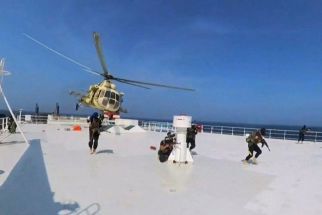Philippines, SoKor complete talks for 12 fighter jets
MANILA, Philippines - The Philippines is very close to acquiring 12 lead-in fighter trainer jets from South Korea as the two countries completed the negotiations for the multi-billion project on Friday.
The Department of National Defense (DND) Special Bids and Awards Committee led by Undersecretary Fernando Manalo approved the offer of Korea Aerospace Industries (KAI) after about seven months of negotiations.
The completion of the talks would pave the way to the signing of the contract for the P18.9-billion ($415.7-million) project.
“We did not only inch closer (to a deal), we are almost there,†Manalo told reporters after the final round of negotiation held in Camp Aguinaldo.
The Philippines will be acquiring FA-50 jets, which are derived from the family of T-50 advanced jet trainer air assets.
The first batch of jets will be delivered late next year if a contract is signed this month. KAI is required to deliver at least two air assets within 18 months after the inking of the contract.
The delivery for the project is expected to be completed by 2017.
“We will have to have the contract signed if not within the month of February, before the 15th of March,†Manalo said.
KAI representatives said they are honored to negotiate with the DND and vowed to do their best to successfully implement the project.
FA-50s are air assets that have fighter capabilities but possess some features that are different from more advanced fighter jets.
The FA-50’s design was drafted from Lockheed F-16 fighter jet. The F-16 aircraft has a very long list of weapons that are certified for use while the weapon capabilities of the FA-50 are limited to the low-cost missile systems.
Lead-in trainer jets can be used to prepare pilots for more advanced air assets.
When asked when the Philippines can acquire real fighter jets, Manalo said: “Actually, we are considering it (FA-50) as not just an ordinary lead-in fighter because it can deliver short range missile and there is a potential for these to be classified as beyond the short range fighter aircraft.â€
The completion of the negotiations came after Malacañang approved the payment scheme for the project, one of the big-ticket items in the military’s upgrade program.
The Philippines will make an advance payment worth 15 percent of the total contract price to KAI.
Malacañang has also allowed the Defense department to tap a progress payment scheme, wherein the government would pay the supplier based on a mutually-agreed upon payment schedule.
KAI initially wanted the Philippines to pay 52 percent down payment for its manufacturing costs. The company, however, dropped the payment scheme and has agreed to a progress payment.
Under a progress payment, the government would deliver payments upon the completion of certain “milestones†or progress related to the construction of the jets.
Contentious points
The final negotiations focused on two issues namely the provision of spare parts and the costs involved in the buyers furnished equipment (BFE) like navigation systems and global positioning systems.
Manalo said the BFE, which include equipment to be installed on the jets, costs about $5.93 million as per KAI estimates.
The South Korean firm agreed to shoulder additional costs if the equipment exceeds the estimated amount.
“If we accept the estimate of KAI… then there should be an assurance that the $5.9-million will not be exceeded,†Manalo said.
The Philippines has also agreed to KAI’s proposal to reduce the spares by around $500,000 or about P22-million.
“The spares have been reduced but for a project worth P18.9 billion pesos that is negligible,†Manalo said.
Market risks
The Philippines will absorb the costs involved in the foreign exchange fluctuations because it will pay for the jets in dollars.
A weaker peso could raise the acquisition costs of the 12 lead-in fighter trainer jets.
Manalo, however, claimed that the government would incur less costs if it absorbs the impact of a weaker peso instead of borrowing money for the air assets.
He noted that borrowing money to fund the air assets would entail hefty interest payments.
“We are not inclined to open an LC (letter of credit) for the entire P18.9-billion,†Manalo said in an earlier interview.
“If you deposit the amount to the bank for the LC that you will open in favor of the supplier, the payment will be made in let’s sat 18 months or 24 months. Imagine how much interest you will pay.â€
Instead of opening an LC, the Defense department is seeking a multi-year obligation authority that will allow the government to settle its obligations in a less burdensome way.
“The government will pay every time payment is due and demandable and this will be stipulated in the contract,†Manalo said.
“This is more advantageous because the national government doesn’t have to acquire a loan to generate P18.9-billion.
- Latest
- Trending






























